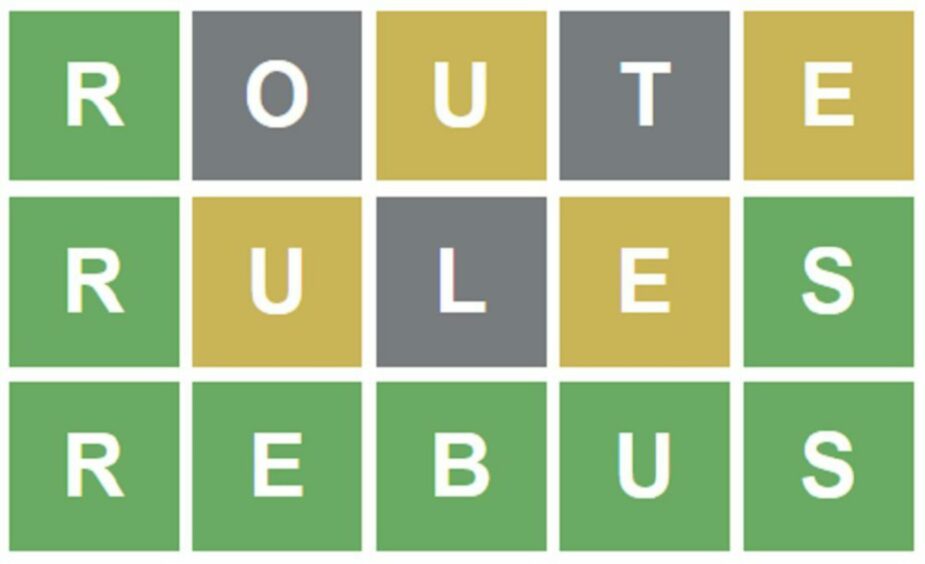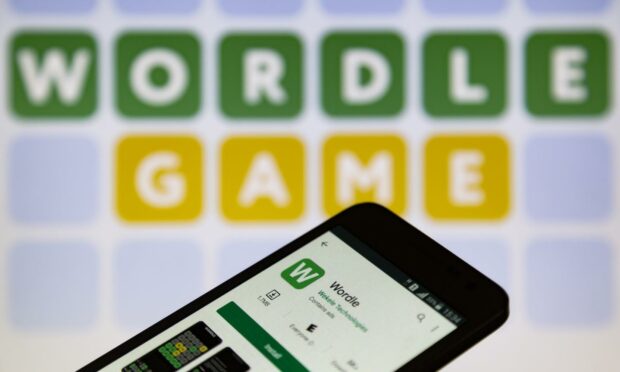Five letters, six attempts, one word – can you guess it right?
By now, you probably already know we are talking about Wordle – the latest pandemic craze that has got all the Scrabble and Sudoku fans locked onto their screens on a daily basis.
Created in October by a Brooklyn software engineer, Wordle is a “simple, but challenging” vocabulary game that’s become the banana bread of 2022.
Since it first popped up on our social media feeds, the game has gone viral all across the world – from dozens of players to hundreds of thousands in just a few months.
Even if you still haven’t given into the obsession yourself – although that’s quite unlikely – you have most certainly come across the mysterious grid of green, grey and yellow squares.
But in case you are still wondering what the craze is all about, or you’re pondering over how to crack the code and become the new Wordle champion – we’ve got you covered.
Here is everything you need to know about the latest phenomenon in the world of puzzles:
What is Wordle?
Wordle is a daily vocabulary game in which players get six tries to deduce a five-letter word of the day.
Everyone gets the same word each day, and the game can only be played once per day – so if you get it wrong, you have to wait 24 hours to have another shot with a new puzzle.
After each session, players can share their results to social media using emoji that correspond to the game board. However, it doesn’t reveal the correct word to spoil the fun for other players.
How do you play the game?

The game is fairly simple and quick, however proven to be increasingly compelling.
The mission is to guess the five-letter word in six attempts or less, and after each try the tiles change colour.
If any of the letters from the word you have typed in show up as green, they’re in the word of the day and in that exact same position.
If any of them turn yellow, it means they are in the word of the day, however, their position in the final word is different.
If any of the letters go grey, they are not in the word of the day at all.
Why is everyone obsessed with Wordle?
Social media has played a crucial part in the game’s popularity with thousands of people sharing their results every day.
Aberdeen NHS psychologist Emma Hepburn thinks that “community element” is probably the most important aspect of Wordle at a time when many might feel isolated.
The light-hearted nature of the game and its accessibility have also potentially added to the appeal as Wordle presents a “nice and simple diversion” from the pandemic.
Wordle 212 2/6
⬜🟨⬜⬜🟩
🟩🟩🟩🟩🟩THE SCREAM I JUST LET OUTTTT 😭😭😭😭
— nada | jonathan bailey era 👑✨ (@jonnybaeley) January 17, 2022
And while she said we can’t really be scientific about why it has become an obsession, Dr Hepburn thinks it’s possible that it has come at “the right time” to connect with peoples’ particular feelings and mental state.
She said: “Craze with games come and go quite regularly if you think about all the kids’ or brain games that have come up in previous years. And it’s probably one of those things that have come at the right time.
“I guess we are in the middle of winter, it’s a bit grim, and Wordle is a kind of light-hearted, fun and achievable game, that also has a lovely story behind it.
Wordle 212 2/6
🟨🟨🟨🟨🟨
🟩🟩🟩🟩🟩I think I got lucky in joining the #Wordle gang! It is definitely the sourdough starter for omicron 😂
— Dhanraj Konduru (@_Dhanraj) January 17, 2022
“There is so much uncertainty and complexity in our daily lives now with the pandemic, and this is the right level of simple and challenging, and it’s short and regular.
“It has all of these things to create a bit of a routine and a nice, simple diversion from what’s going on probably.
“It’s something to anticipate and look forward to as well. That’s a really positive thing for wellbeing – to try something that is totally new and give you a bit of a challenge.”
Five tips to become a Wordle master
While Wordle was created to entice crossword enthusiasts looking for a quick and fun timeout, there is of course an element of friendly competition as well.
Some people have come up with specific strategies to master the game and guess the word of the day as quickly as possible – to then be able to show off their vocabulary skills on social media.
Senior lecturer in language and linguistics at Aberdeen University Elspeth Edelstein thinks the best way to crack the code is to delve a bit deeper into how words are formed.
As someone who has also been consumed by the game for the past week, Mrs Edelstein shared the top five tips to become a Wordle champion.
They have proven to be successful with both her and her other fellow lecturers, so grab your notebook and take notes.
- Start with a word that has a lot of vowels: Try to include “e”, “a” or “o” in the first word you type in to get a clearer picture of what the word of the day might be from the get-go.
- Use more common letters such as “s”, “t” and “r”: You will have a greater chance to guess the word from the second or third attempt if you start with words like “raise”, “heart” or “tears”.
- Think about the common placement of specific letters in words: There are certain letters that are more likely to be at the end of the word or unlikely to be at the beginning. For example, many words finish on a “y” or a silent “e”.
- Think about common letter combinations: Some letters just don’t really go with each other, while others are fairly frequent. For example, it’s more likely to have a “d” or a “b” before an “r”.
- Avoid using the letters in grey: You can only use valid words to guess the correct letters, however, try to use only letters you haven’t previously typed in. It gives you limited options, but it’s the best way to crack the final word as quickly as possible.
